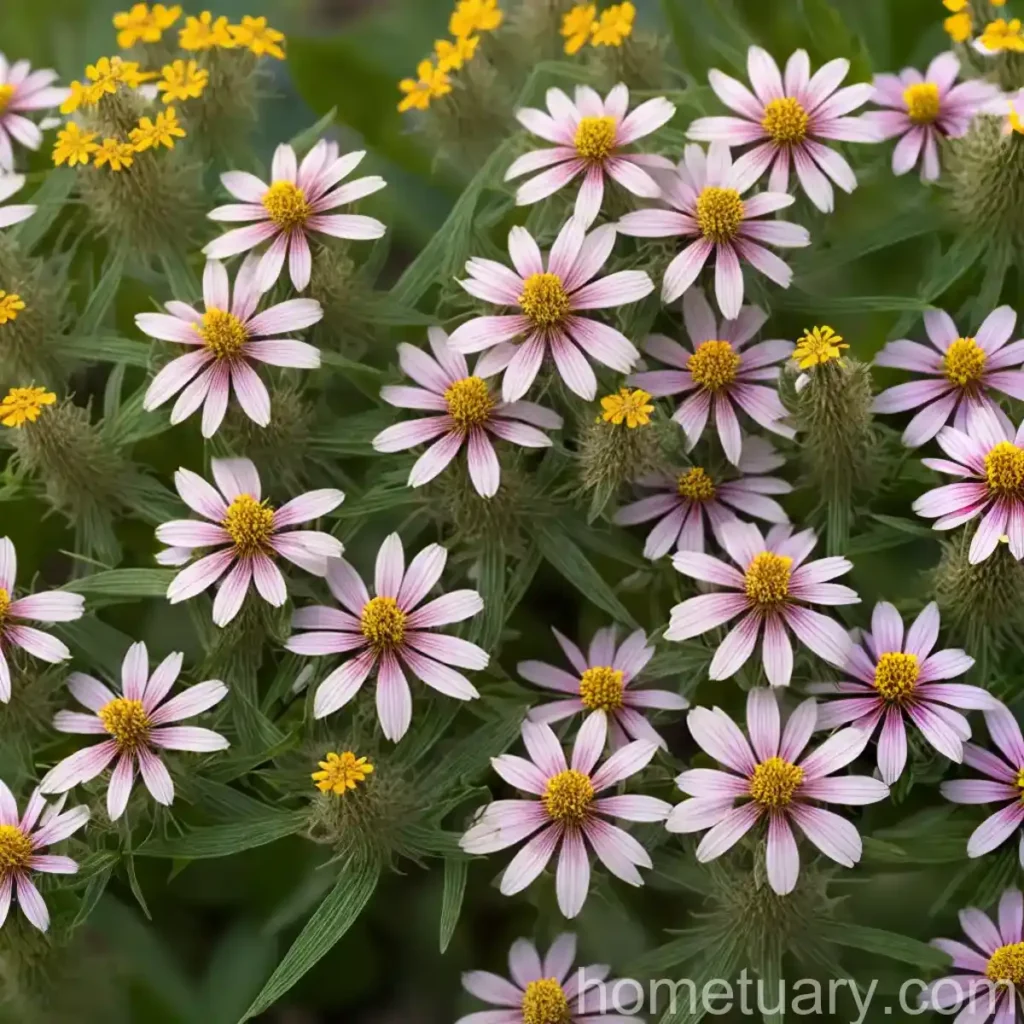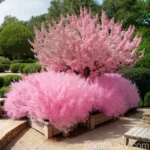Prairie Bundleflower (Desmanthus illinoensis): A Comprehensive Guide
Prairie bundleflower, scientifically known as Desmanthus illinoensis, is a native perennial plant that holds ecological, cultural, and agricultural significance. This guide aims to provide a comprehensive understanding of its characteristics, uses, cultivation, and conservation. From its habitat to gardening tips and ecological importance, this plant has much to offer. Let’s dive into the world of prairie bundleflower to explore its significance and how to cultivate and care for it.
What is Prairie Bundleflower?
Prairie bundleflower is an herbaceous, leguminous plant that belongs to the Fabaceae family. This species is native to North America and is particularly prevalent in the prairies and plains of central and eastern regions of the United States. The plant is known for its delicate and attractive white or pink flowers, which bloom in globular clusters, and its compound leaves that add to its aesthetic appeal.
Plant Characteristics
Here are some key characteristics of the prairie bundleflower:
- Scientific Name: Desmanthus illinoensis
- Common Names: Prairie bundleflower, Illinois bundleflower, prairie mimosa
- Habit: Perennial herbaceous plant
- Flower Color: White or pink
- Leaf Structure: Compound leaves with small leaflets
- Growth Pattern: Forms dense stands and spreads through rhizomatous growth
- Ecological Role: Valuable for nitrogen fixation and as a source of forage for wildlife and livestock
Key Takeaways – Prairie Bundleflower (Desmanthus illinoensis)
Before delving deeper into the specifics of prairie bundleflower, let’s consider some of the key takeaways about this remarkable plant.
Prairie Bundleflower Benefits
- Ecological Role: Plays a crucial role in nitrogen fixation, enhancing soil fertility, and supporting wildlife habitat.
- Forage Value: Serves as a valuable forage plant for livestock and wildlife, aiding in biodiversity maintenance.
- Medicinal Properties: Traditional uses include the utilization of its parts for medicinal purposes owing to its therapeutic compounds.
- Conservation Efforts: Draws attention for restoration and conservation due to its cultural and ecological significance.
Prairie Bundleflower Plant Characteristics
- Flower Morphology: Intriguing white or pink globular flower clusters that add ornamental value.
- Leaf Morphology: Exhibits compound leaves with small leaflets, contributing to its visual appeal.
- Root System: Develops a robust root system, aiding in drought tolerance and soil stabilization.
Desmanthus illinoensis Information
- Native Range: Indigenous to central and eastern regions of the United States, particularly in the prairie landscapes.
- Endangered Status: Recognized for its ecological importance, prompting efforts for its conservation and sustainable use.
Prairie Bundleflower Uses
- Forage and Grazing: Serves as a valuable forage plant, supporting livestock and wildlife in grazing landscapes.
- Medicinal Traditions: Holds traditional and cultural significance in indigenous medicinal practices.
- Conservation Landscaping: Utilized in restoration and conservation initiatives to enhance ecological diversity and stability.
Culture
Understanding the cultural requirements of prairie bundleflower is essential for its successful cultivation and management. From water and sunlight needs to soil and fertilizer preferences, let’s explore the cultural aspects of growing this plant.
Water
Prairie bundleflower exhibits resilience to drought conditions once established, making it suitable for landscapes with sporadic water availability. However, during the initial stages of establishment, adequate moisture is necessary to facilitate root development and overall plant vigor. Generally, aiming for well-drained soil with occasional deep watering is ideal for promoting healthy growth.
Sunlight
As a prairie native, prairie bundleflower thrives in full sun to partial shade conditions. Providing ample sunlight encourages robust flowering and overall plant development. When cultivating prairie bundleflower, it is crucial to position the plant in a location where it can receive at least 6 hours of direct sunlight daily.
Fertilizer
While prairie bundleflower generally thrives in nutrient-deficient soils, incorporating a balanced, low-nitrogen fertilizer during the initial stages of growth can support establishment. Fertilization requirements are minimal once the plant is established. Avoiding high-nitrogen fertilizers is advisable to prevent excessive vegetative growth at the expense of flowering and seed production.
Soil
The adaptable nature of prairie bundleflower allows it to flourish in a wide range of soil types, including sandy, loamy, and clay soils. Well-draining soils are especially favorable to prevent waterlogging and root rot. It is important to ensure the soil pH is within the slightly acidic to neutral range (pH 6.0-7.0) for optimal nutrient availability and plant health.
Pruning
Prairie bundleflower generally requires minimal pruning in a garden setting. Removal of dead or damaged foliage and spent flower clusters can help maintain the plant’s visual appeal and prevent the formation of disease-conducive conditions. Additionally, managing the plant’s natural spreading through rhizomatous growth may be necessary to contain its expansion within a desired area.
Uses
The versatile uses of prairie bundleflower encompass ecological, agricultural, and cultural domains. Understanding the myriad applications of this plant sheds light on its versatile nature and significance in various contexts.
Medicinal Properties
In native medicinal traditions, various parts of prairie bundleflower have been utilized to address diverse health concerns. The roots, leaves, and flowers contain compounds with potential therapeutic effects, including antimicrobial, anti-inflammatory, and antioxidant properties.
Some of the documented traditional uses include the preparation of infusions for treating fevers, respiratory conditions, and skin ailments. However, it is important to exercise caution and seek professional guidance before utilizing plants for medicinal purposes.
Forage and Grazing
Prairie bundleflower holds substantial forage value for livestock, particularly in grazing landscapes. Its nutritional quality, resilience to grazing pressure, and capacity for regrowth make it an attractive component in forage systems. The plant’s compatibility with native grasses and other forbs further enhances its role in sustainable grazing and wildlife habitat management.
Soil Improvement and Erosion Control
The ability of prairie bundleflower to fix atmospheric nitrogen and enhance soil fertility makes it a valuable component in land restoration and soil conservation efforts. By stabilizing soil through its robust root system and contributing to the accumulation of organic matter, the plant aids in erosion control and ecological restoration, particularly in disturbed landscapes.
Pruning
Pruning prairie bundleflower is a simple task that can help maintain the plant’s appearance and health. Here are some tips for effective pruning:
- Deadheading: Remove spent flower clusters to encourage continuous flowering and prevent self-seeding.
- Trimming: Prune any damaged or diseased foliage to promote overall plant vigor.
- Containment: Manage the plant’s spreading by trimming back rhizomatous growth to prevent overexpansion in garden settings.
Propagation
The propagation of prairie bundleflower can be accomplished through several methods, allowing for the expansion of its presence in diverse landscapes and restoration projects.
Seed Propagation
Seeds are the most common method of propagating prairie bundleflower. The process involves collecting mature seed pods and extracting the seeds for sowing in prepared seedbeds or directly in the target planting area. Scarification, which involves nicking the seed coat to enhance germination, may be beneficial for improving seedling establishment.
Rhizome Division
Propagation through rhizome division is another viable method, particularly for expanding existing stands of prairie bundleflower. Divide healthy rhizomatous segments from established plants and transplant them to desired locations. Rhizome division is an effective way to accelerate the spread and establishment of prairie bundleflower in suitable habitats.
Seedling Transplanting
Transplanting seedlings derived from germinated seeds can facilitate the establishment of prairie bundleflower in controlled nursery environments before transferring them to their permanent positions. This method allows for the careful nurturing of young plants to ensure their resilience upon transplantation.
Container Popularity
The adaptable nature and ornamental appeal of prairie bundleflower have led to its increasing popularity as a container plant in landscaping and horticultural settings. The plant’s ability to thrive in varying soil types and its moderate water and nutrient requirements make it conducive to container gardening.
Container Common Diseases
Although prairie bundleflower is generally resilient to many diseases, certain issues may arise, particularly in container settings. Common diseases that may affect prairie bundleflower in containers include:
- Root Rots: Excessive moisture and poor drainage can lead to root rot issues, compromising the plant’s health and vigor.
- Fungal Leaf Spots: Prolonged high humidity and reduced air circulation in container environments may promote the development of fungal leaf spot diseases.
Disease Diagnosis
Prompt and accurate diagnosis of diseases affecting container-grown prairie bundleflower is essential for effective management. Symptoms such as wilting, yellowing foliage, and unusual spots or lesions provide valuable indicators for identifying specific diseases.
Common Pests
Prairie bundleflower is relatively resistant to pest infestations, attributed to its inherent defensive compounds and ecological associations. However, occasional pest pressures may arise, particularly in disturbed or stressed plant populations. Some potential pests include:
- Aphids: These sap-sucking insects may infest prairie bundleflower, particularly during periods of lush vegetative growth.
- Leafhoppers: Leafhoppers can sometimes pose threats to plant health, leading to discoloration and distortion of foliage.
Botanist’s Tips
As a plant scientist or botanical enthusiast, understanding the unique features and ecological interactions of prairie bundleflower contributes to its appreciation and conservation. Here are some insights and tips for fostering an appreciation for this remarkable plant:
- Ecological Significance: Explore the ecological roles of prairie bundleflower, including its interactions with nitrogen-fixing bacteria and wildlife support.
- Native Landscaping: Incorporate prairie bundleflower as a component in native landscaping and restoration projects to enhance biodiversity and ecological resilience.
- Botanical Illustrations: Capture the intricate floral and foliage characteristics of prairie bundleflower through botanical illustrations or photography to document its beauty and ecological importance.
Fun Facts
Here are a few fascinating facts about prairie bundleflower that highlight its ecological and cultural significance:
- Nitrogen Fixation: Prairie bundleflower forms symbiotic relationships with nitrogen-fixing bacteria, contributing to soil fertility and ecosystem health.
- Ethnobotanical Traditions: Indigenous cultures have historically utilized prairie bundleflower for medicinal and cultural purposes, reflecting its diverse significance.
- Wildlife Support: The seeds and foliage of prairie bundleflower provide valuable food sources for diverse wildlife, including birds and small mammals, contributing to ecosystem dynamics.
Links to External Resources
For further exploration and understanding of prairie bundleflower, the following external resources provide valuable insights and information:
- USDA Plants Database – Provides comprehensive botanical information and distribution data for prairie bundleflower and other native plants.
- Lady Bird Johnson Wildflower Center – Offers resources on native plant landscaping and ecological restoration, including information on prairie bundleflower.
- Illinois Wildflowers – Features detailed species profiles and botanical resources, including information on prairie bundleflower in its native range.
Conclusion
In conclusion, prairie bundleflower (Desmanthus illinoensis) stands as a versatile and ecologically important plant species with diverse ecological, cultural, and agricultural significance. From its forage and medicinal uses to its role in ecological restoration and conservation, the plant embodies resilience and multifaceted value. By understanding its cultural requirements, uses, and ecological roles, we can appreciate and conserve this remarkable native plant for future generations.
Whether in native landscapes, conservation areas, or horticultural settings, prairie bundleflower offers a wealth of benefits and insights into the intricate web of plant diversity and ecological interactions. As we continue to explore and celebrate the unique attributes of prairie bundleflower, we contribute to the conservation and appreciation of our natural heritage.
“In every walk with nature, one receives far more than he seeks.” – John Muir
References
- U.S. Department of Agriculture, Natural Resources Conservation Service. “Desmanthus illinoensis (Michx.) MacM. – Prairie Bundleflower.” Plants Database, plants.usda.gov/core/profile?symbol=DEIL.
- Lady Bird Johnson Wildflower Center. “Native Plant Information Network.” Wildflower.org, www.wildflower.org/plants/.
- Illinois Wildflowers. “Welcome to the Illinois Wildflowers Website.” Illinoiswildflowers.info, www.illinoiswildflowers.info/index.htm.















